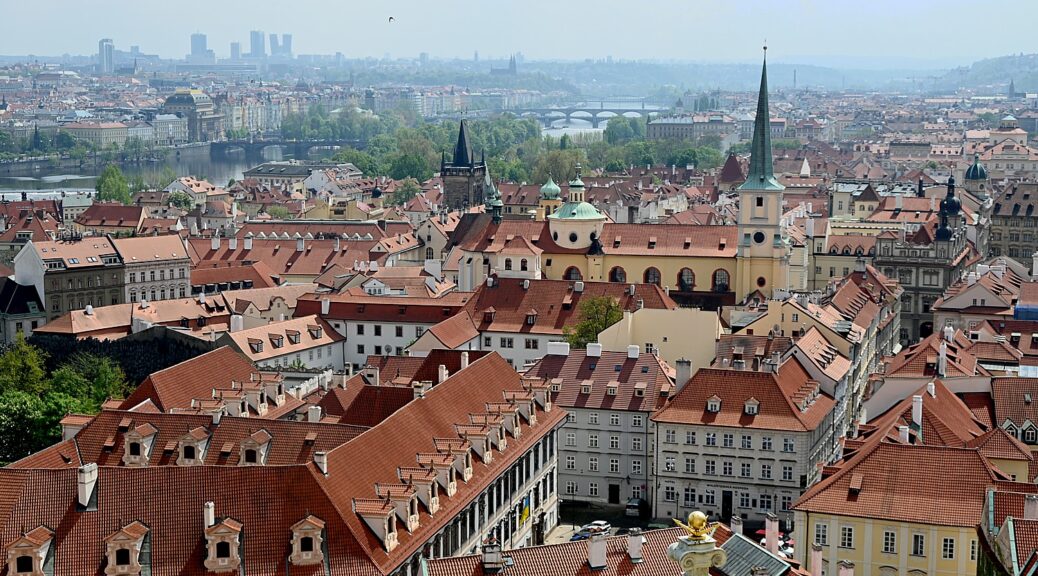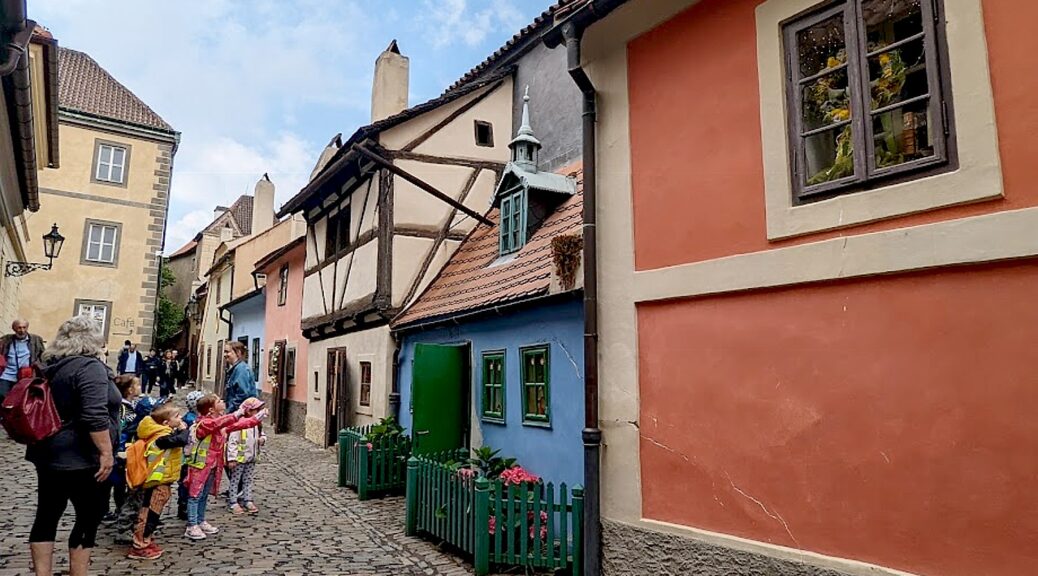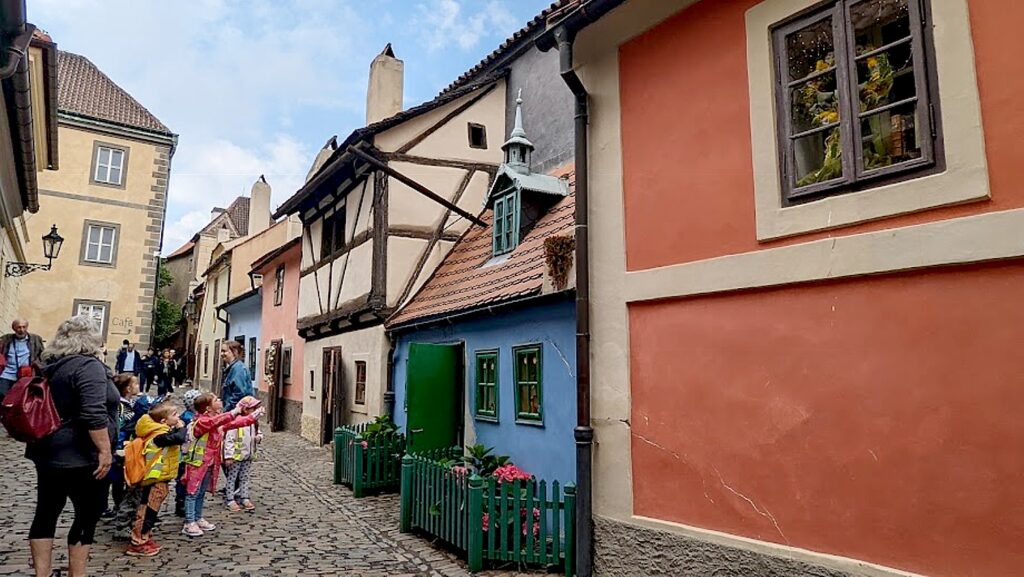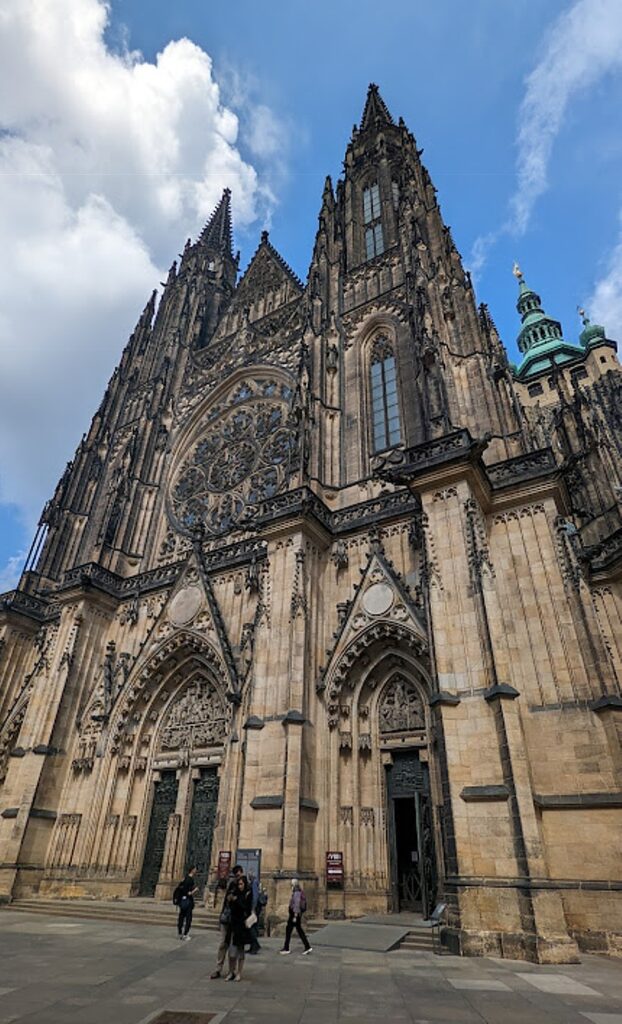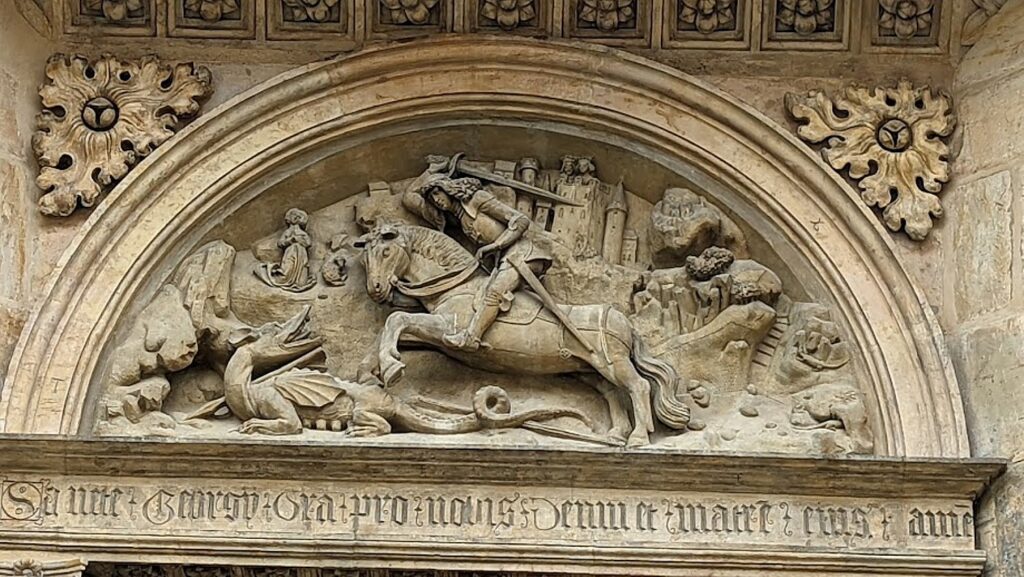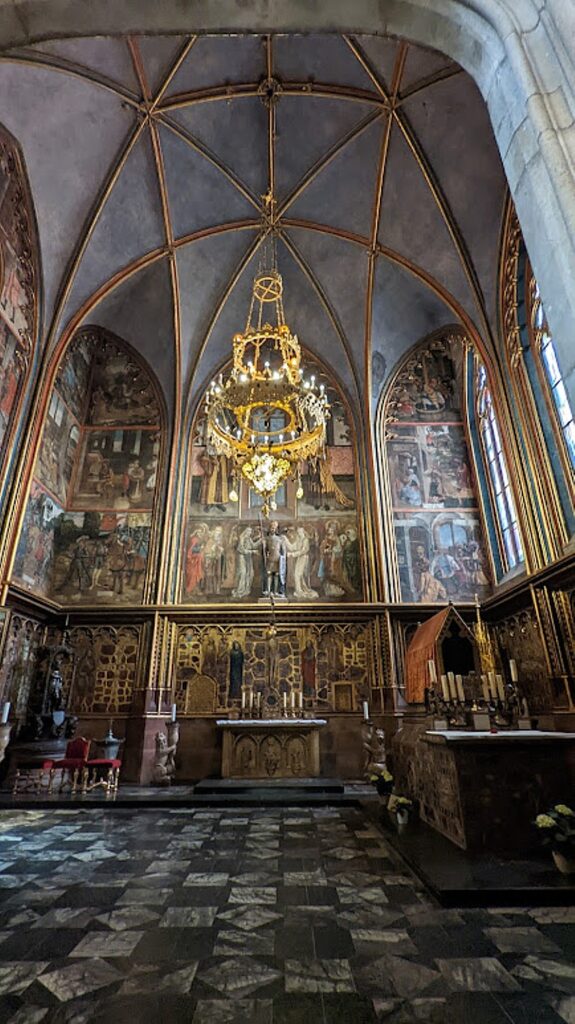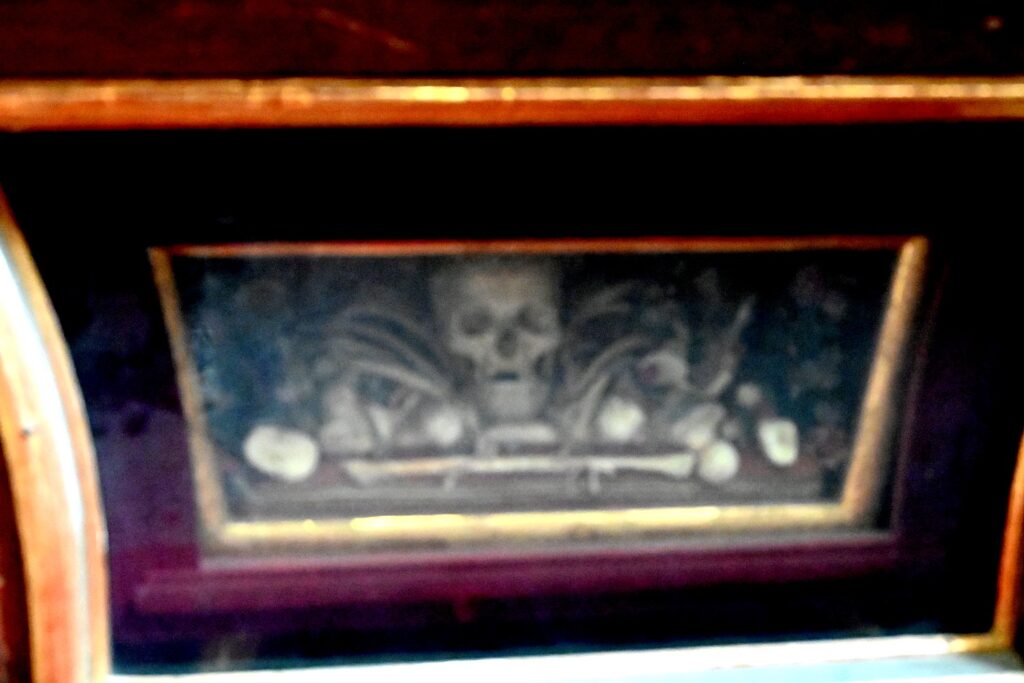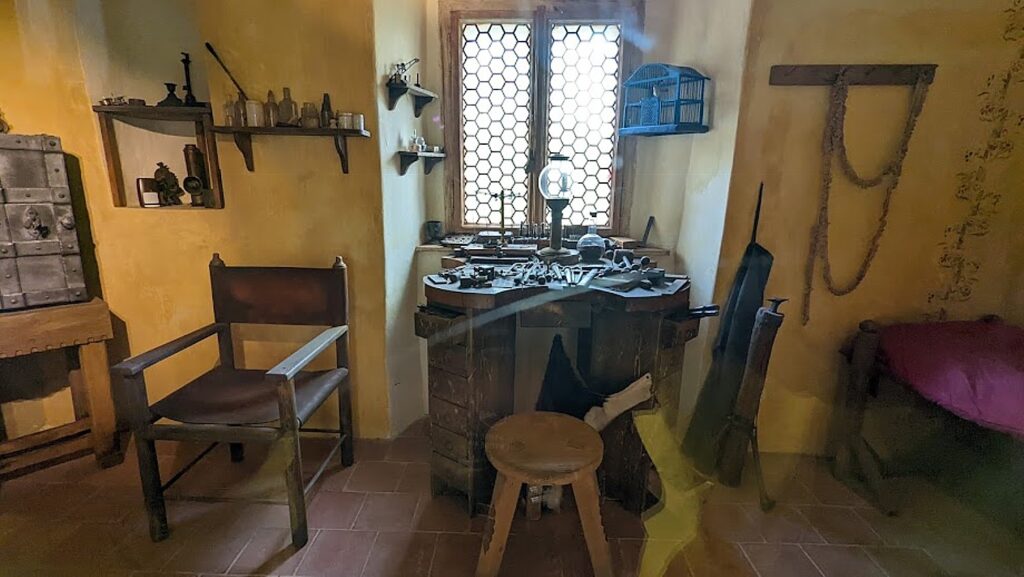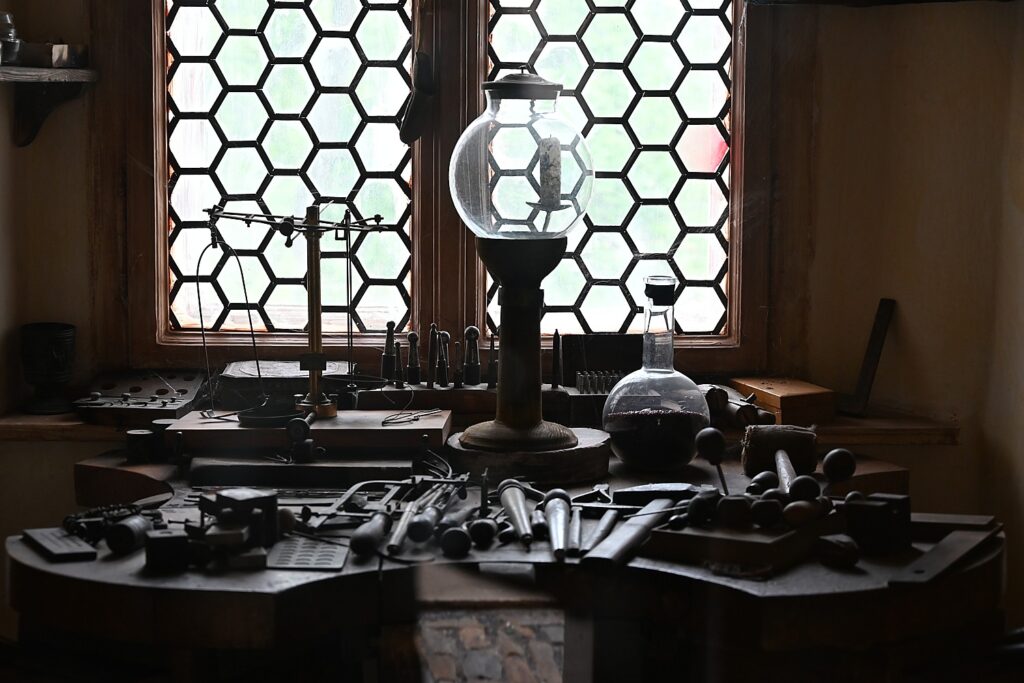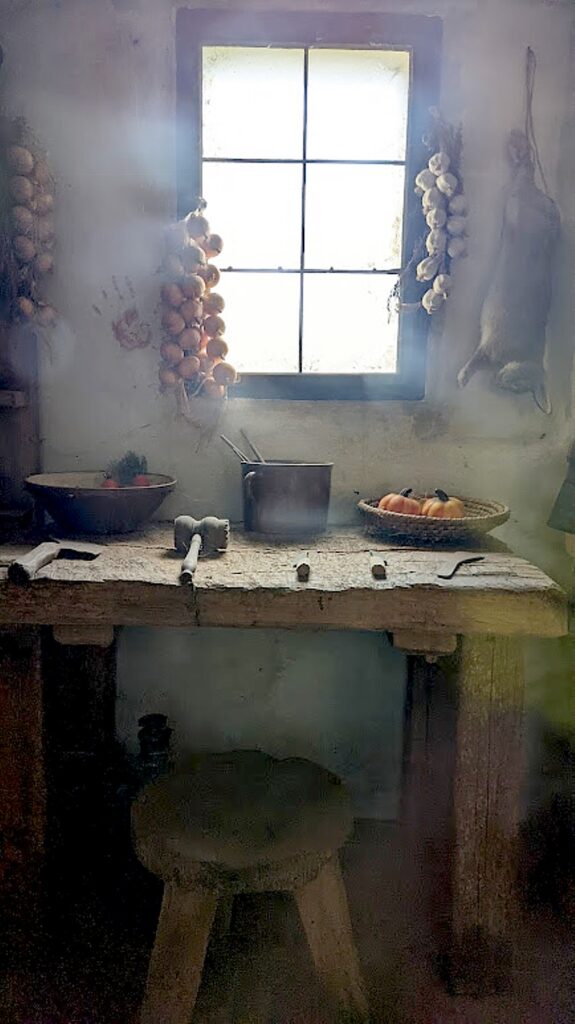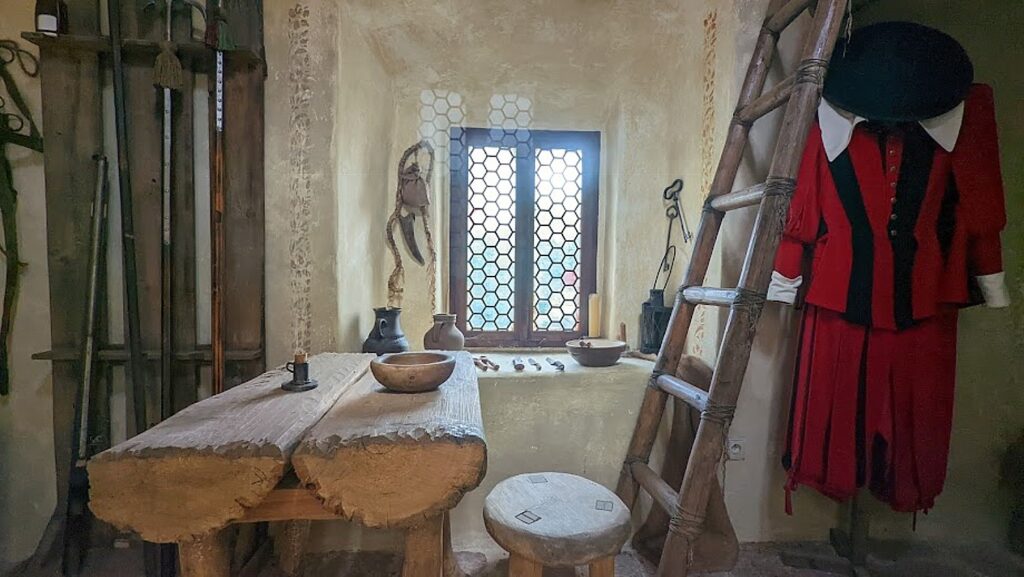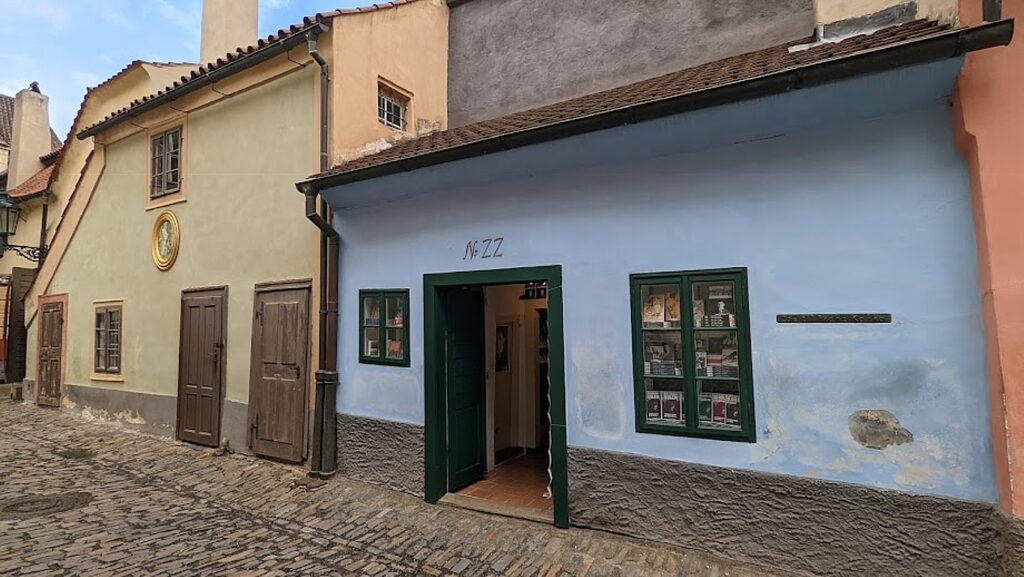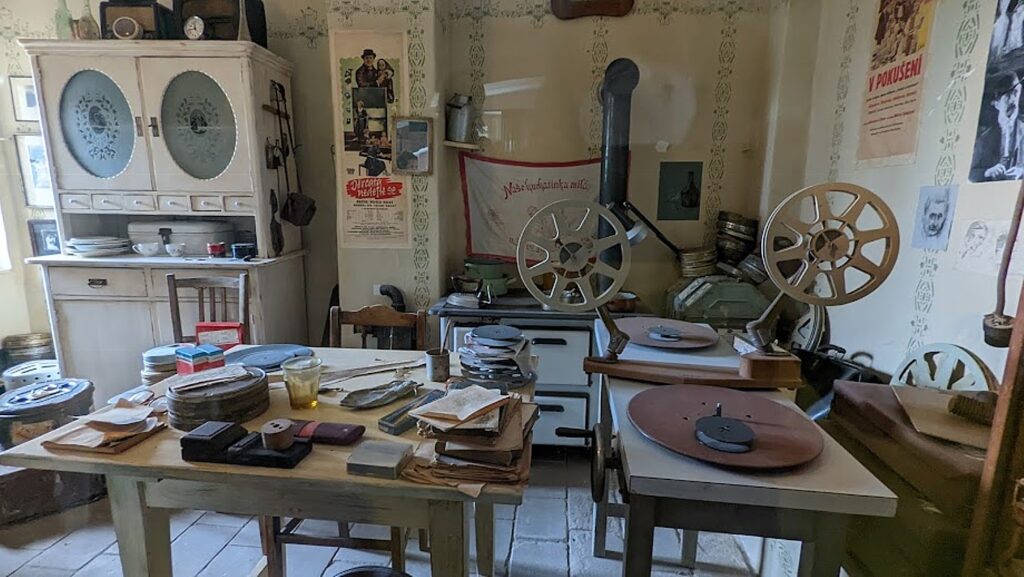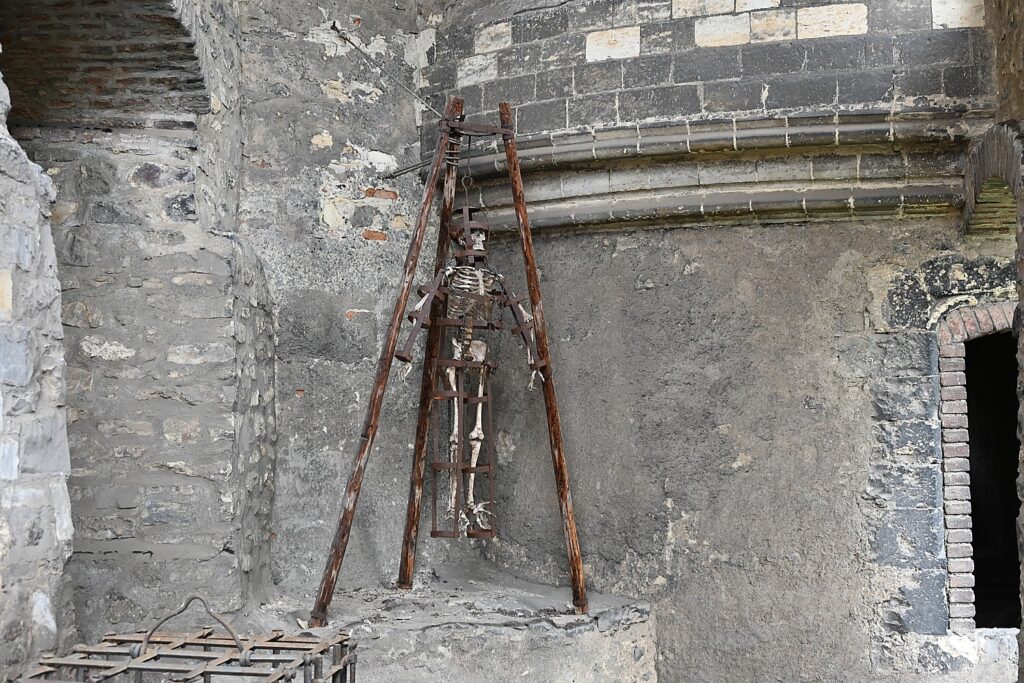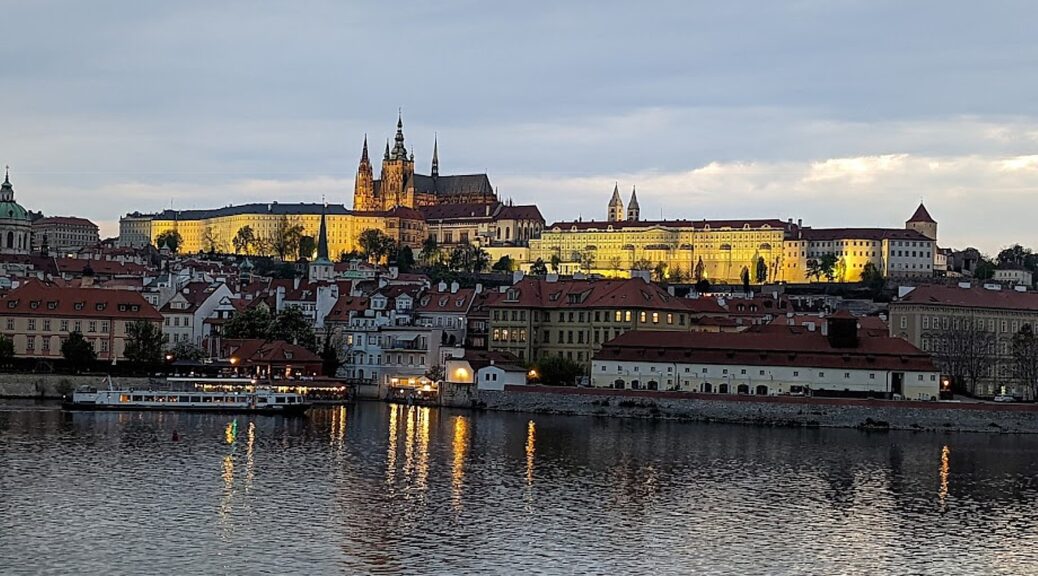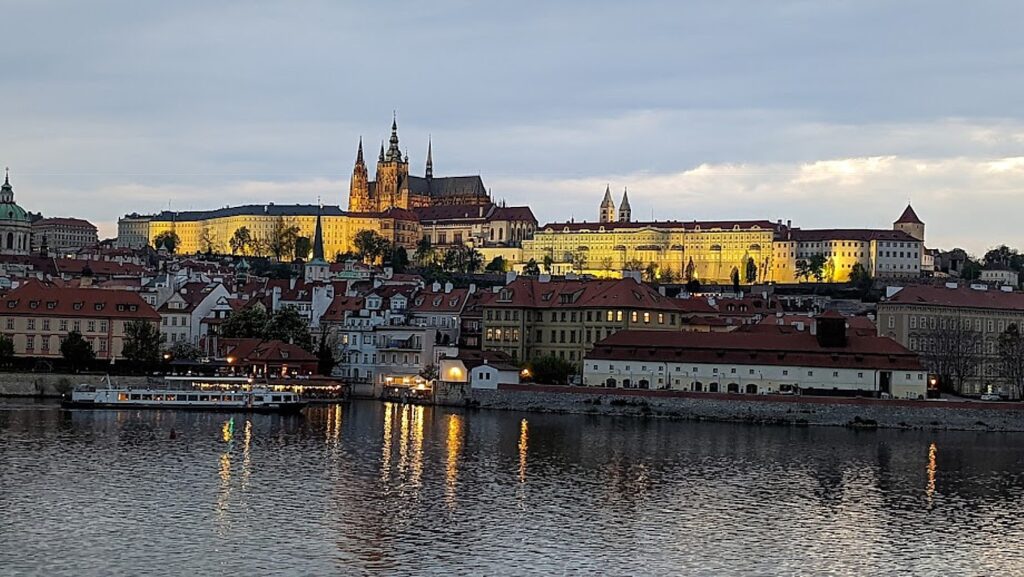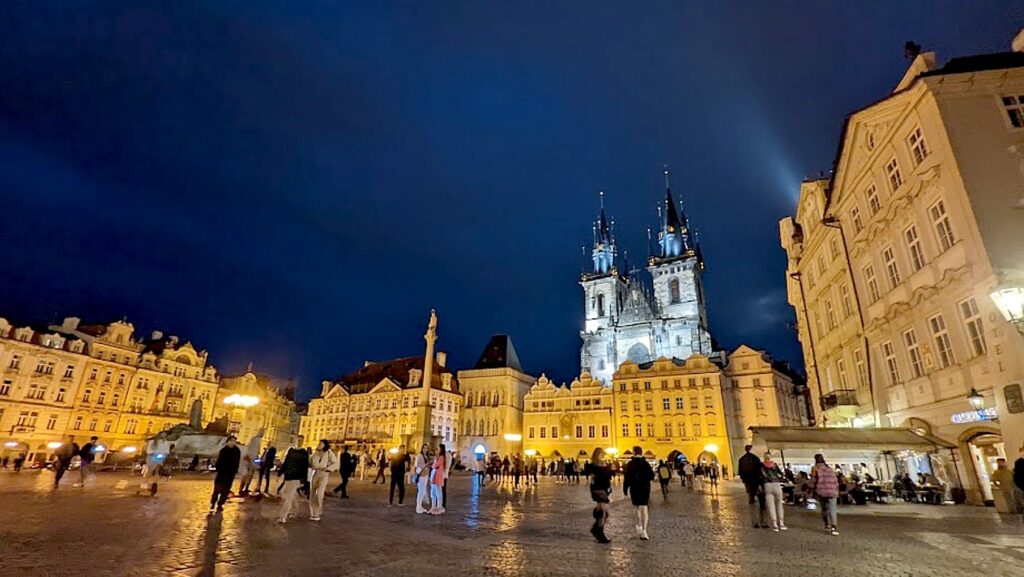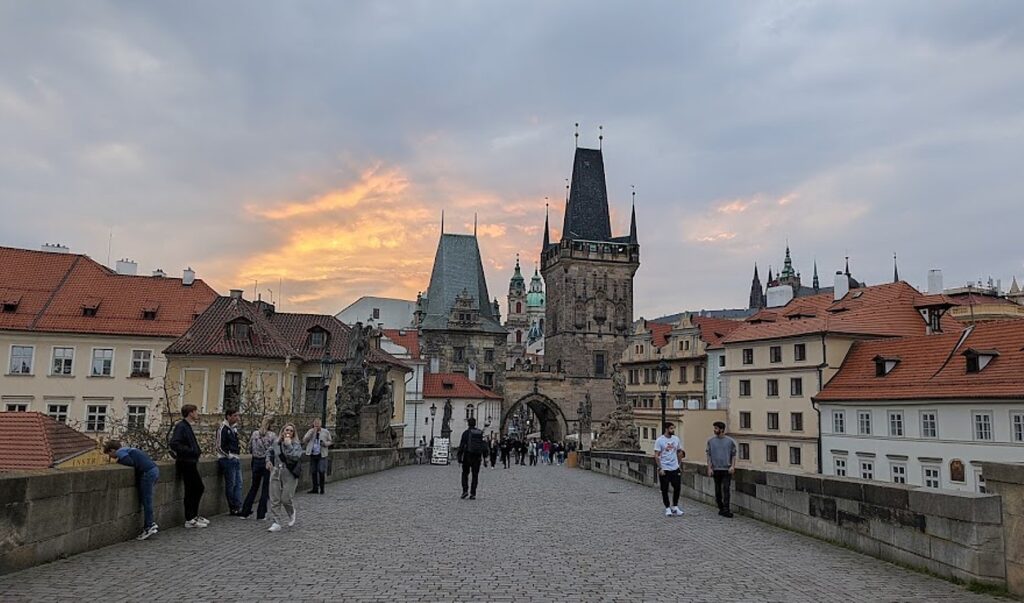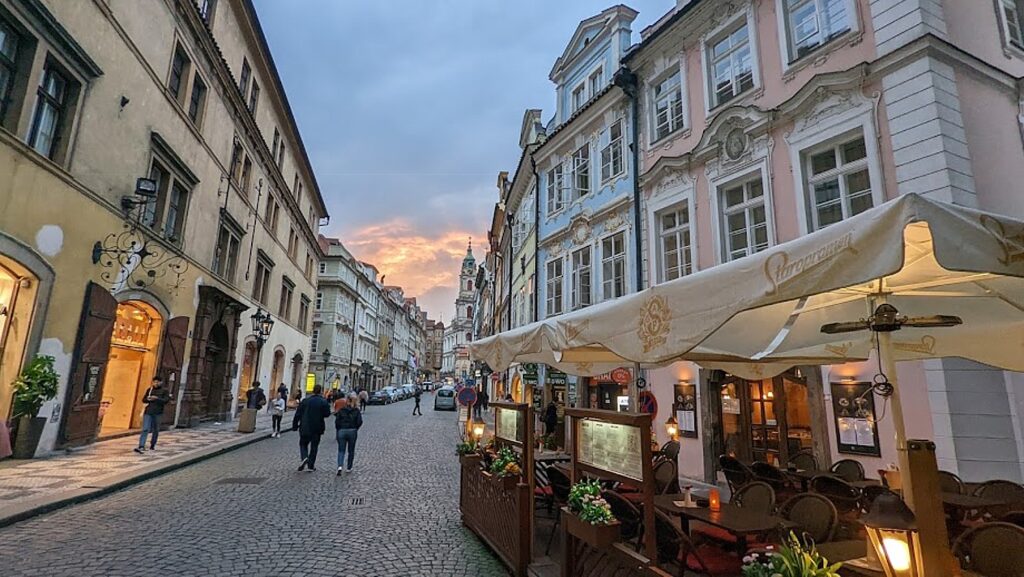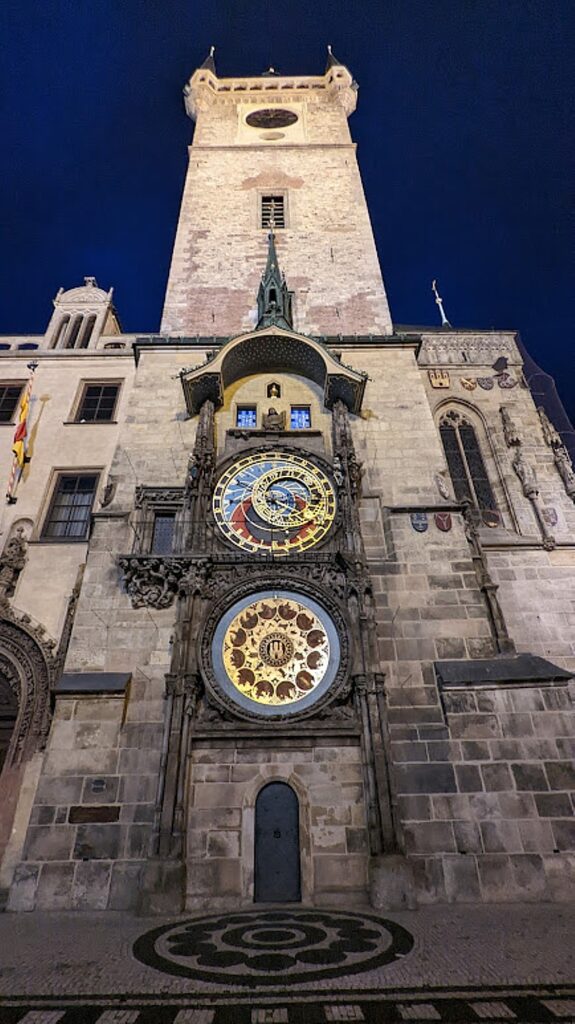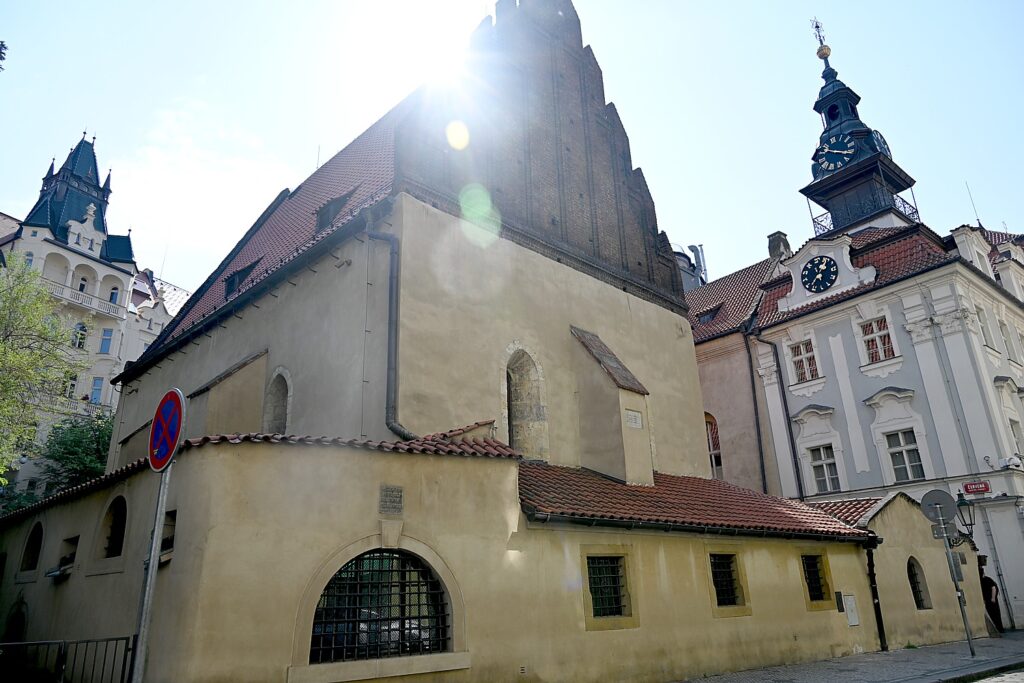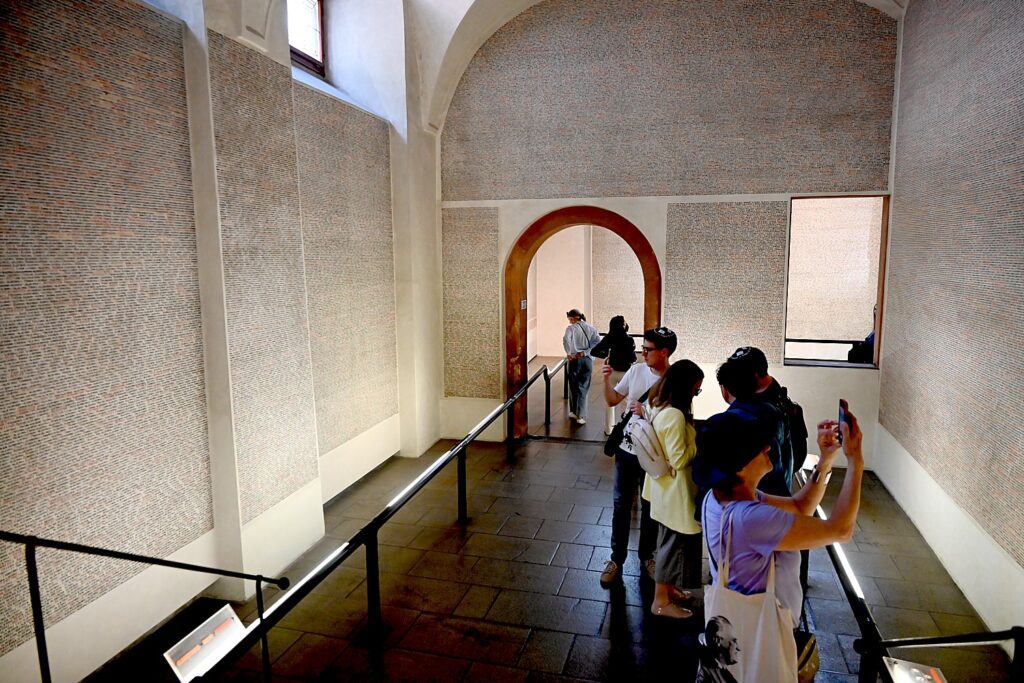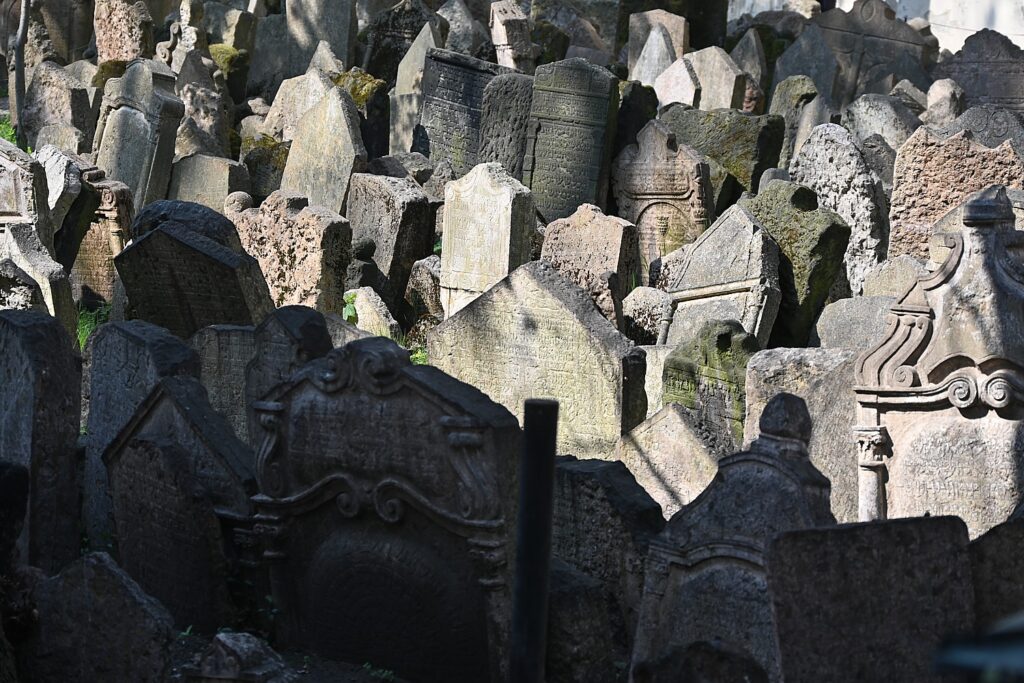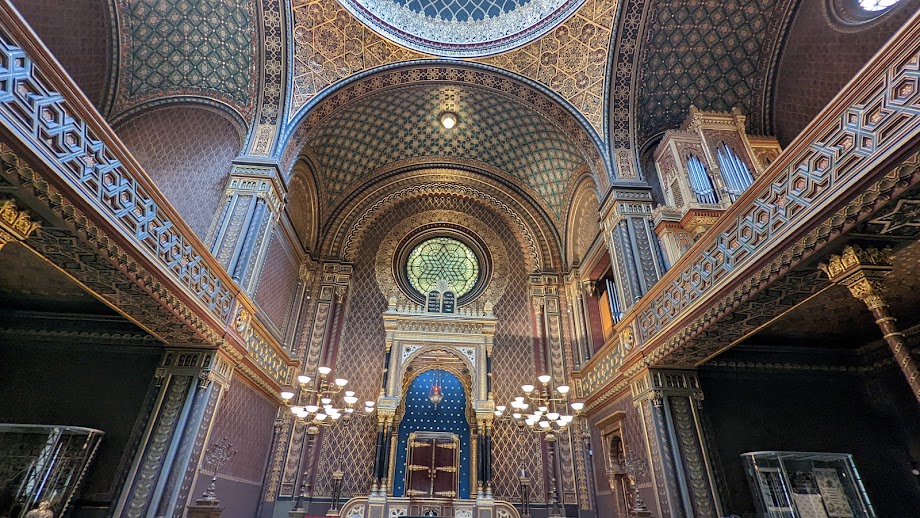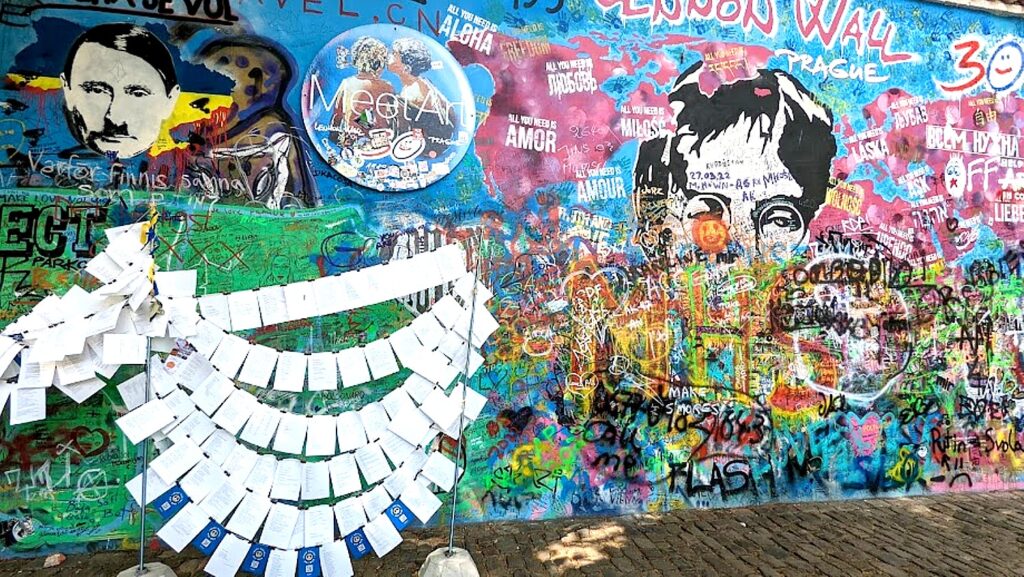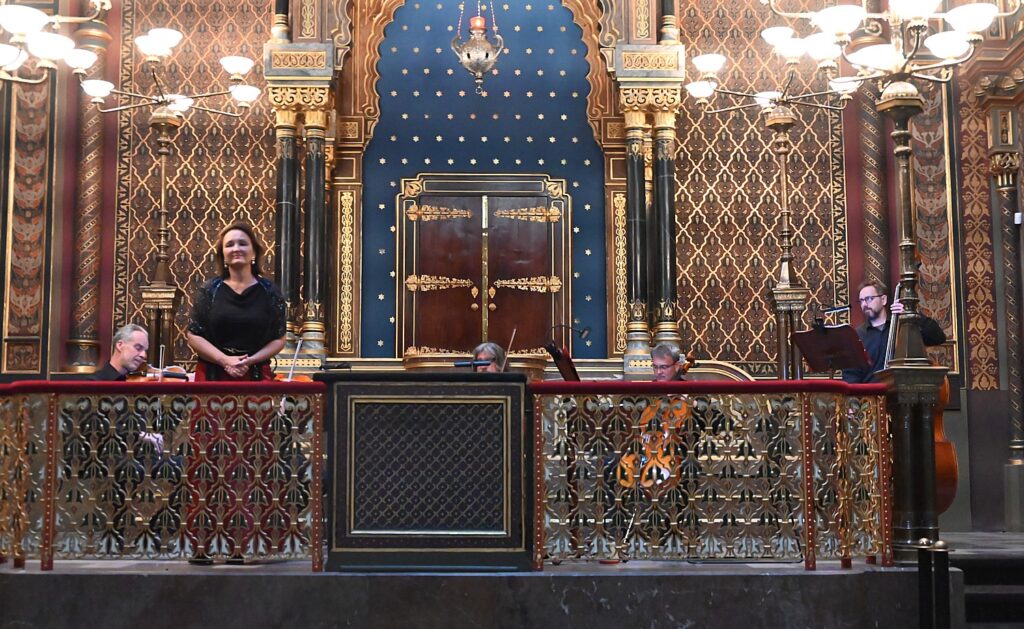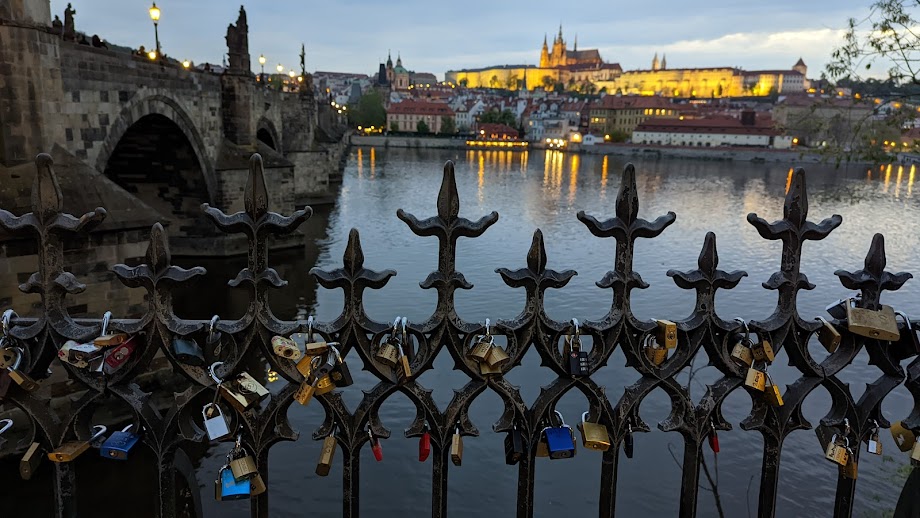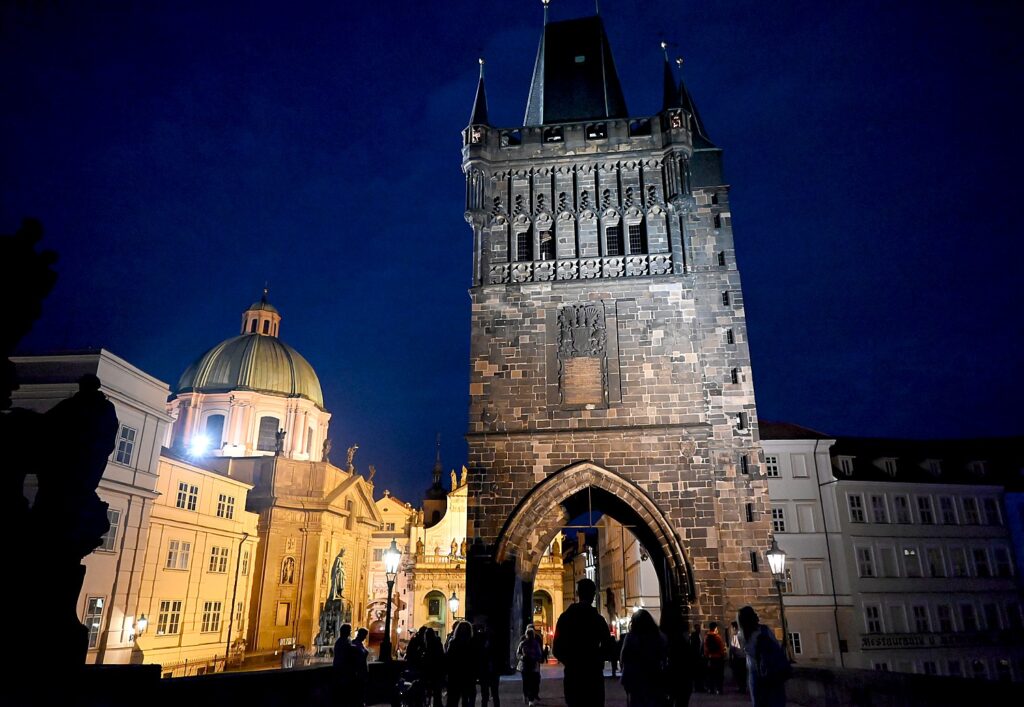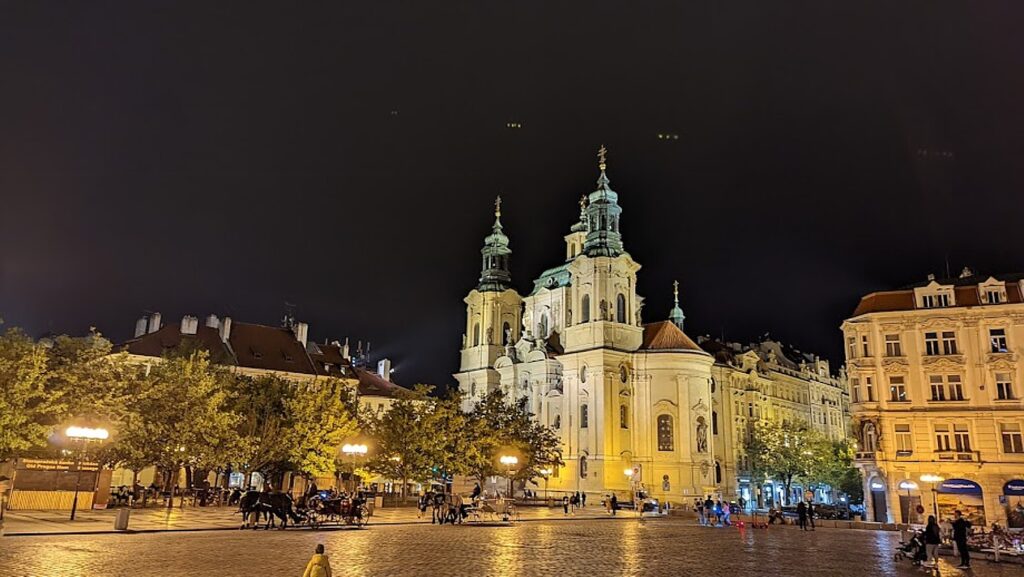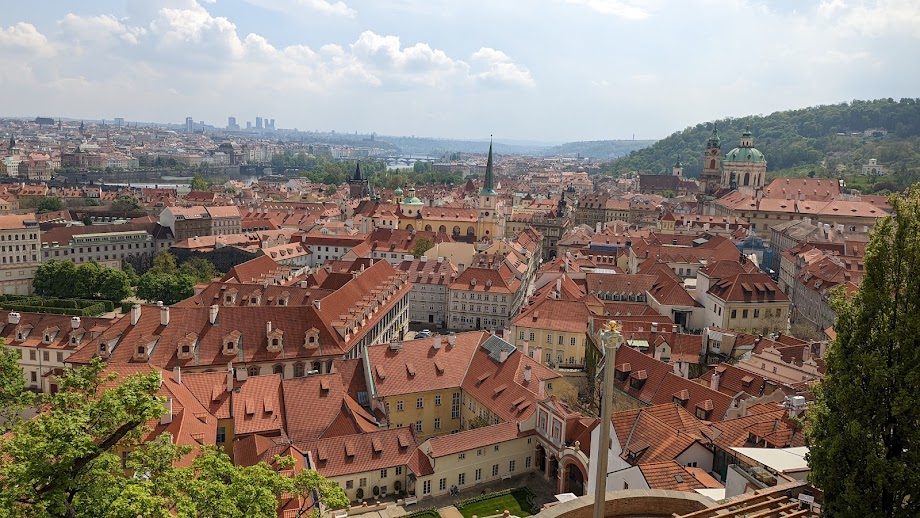
By Karen Rubin, Travel Features Syndicate, goingplacesfarandnear.com
When I come out from Golden Lane, with its tiny houses that line the Prague Castle walls, I look across to see the Lobkowicz Palace and realize it is included on the Prague Cool Pass, so decide to check it out. This turns out to be the absolute highlight for me in Prague.
The Palace, itself, is fabulous, and the collection it houses, is breathtaking. And the family’s story is utterly fascinating.
Built in the mid-16th century, the Lobkowicz Palace is one of the most significant cultural sites in the Czech Republic (no hyperbole), and the only privately owned palace in the Prague Castle complex, a UNESCO World Heritage Site. The family, once one of the richest and most powerful in Bohemia, have been key players in the history of the Czech Republic and the whole of Europe.
I know none of this when I walk in, but quickly am awe-struck.
The audio tour through 21 galleries is narrated by William Lobkowicz (b 1961), the current heir and manager of most of the Lobkowicz lands in the Czech Republic (Lobkowicz Palace, Nelahozeves, Roudnice and Strekov Castle), with some cameo appearances by his wife and mother. He puts faces as well as context to the portraits you see (as fabulous as they are, going back to the first Prince Lobkowicz, Zdenko Adalbert Popel).
The Lobkowicz Palace was built in the mid-16th century by Bohemian nobleman Jaroslav of Pernstein (1528–1569). It came into the Lobkowicz family through the marriage of Polyxena of Pernstein (1566-1642) to Zdenko Adalbert Popel, 1st Prince Lobkowicz (1568–1628), in 1603.
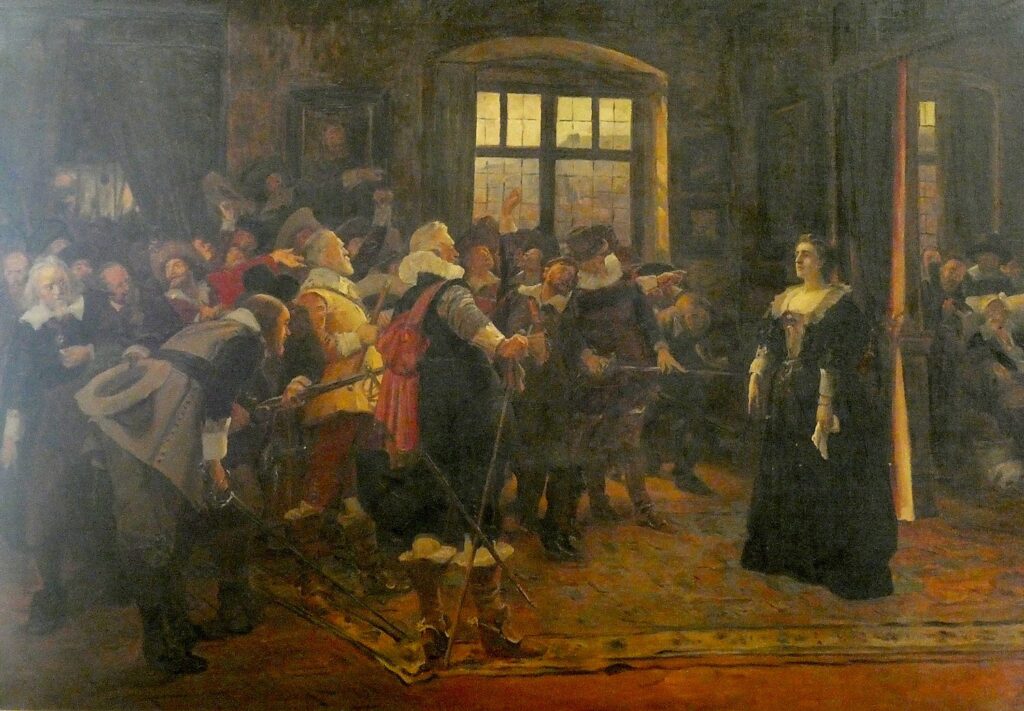
Polyxena and the palace played a key role in one of the most significant events in Prague history: the famous Defenestration of Prague in 1618, when Protestant rebels threw two Catholic Imperial Ministers and their secretary out the windows of the Royal Palace in Prague Castle. Surviving the fall (they fell on a pile of refuse in the moat), they were given refuge in the adjoining Lobkowicz Palace, where they were protected by Polyxena. (The scene is immortalized in a painting which you can view.)
The Defenestration of Prague signaled the beginning of a Bohemian revolt against the Habsburg Emperor Ferdinand II, leading to the Thirty Years’ War.
“It is no exaggeration to call the Thirty Years’ War the worst war in European history. The combatant nations lost between 25 and 40 percent of their populations to military action, famine and disease,” states historyextra.com.
Also in this room, there is a notable painting attributed to Velazquez of the “Infanta Margarita Teresa of Spain,” the daughter of Philip IV of Spain, and granddaughter of Emperor Ferdinand III, when she was four. At 15, she was married to her uncle, Emperor Leopold I, in 1666, and bore him four children before dying in childbirth at 22. (Philip would only have Velazquez paint the family). She is featured in one of Velazquez’ most famous portraits, “Infanta Margarita Teresa in a Blue Dress” and in “Las Meninas” (“The Ladies-in-Waiting”), a painting that is recognized as one of the most important in Western art history.
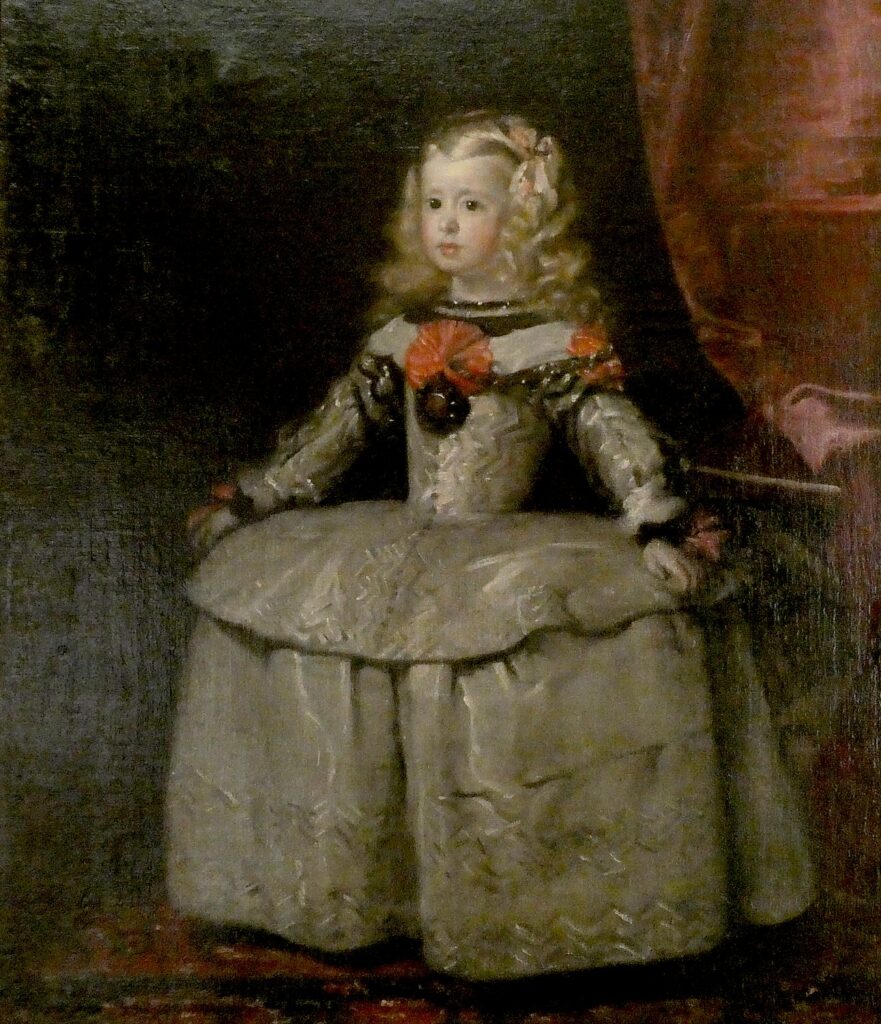
But this is nothing compared to the astonishment you experience when you enter the Music Room. Here you see various historical instruments on display and the important musical personalities within Lobkowicz family in the 18th and early 19th centuries.
Ferdinand Philipp Lobkowicz (1724-1784) is described as “an eccentric melancholic, a passionate collector, scientist, painter and musician. He was the second born son, so expected to be able to devote himself to his passions – science and art. That plan was derailed when his older brother Wenzel died suddenly and Ferdinand was required to take over the ancestral estates. He preferred to reside alone in Eisenberg castle where he experimented with alchemy, created bizarre paintings, played violin and composed. He spent time outside the Hapsburg Empire – in England, Italy, Prussia – and became acquainted with important composers. He composed a Sinfonia with Carl Philipp Emanuel Bach and was closely associated with Christoph Willibald Gluck. He married when he was 45 to a woman who shared his passion for music.
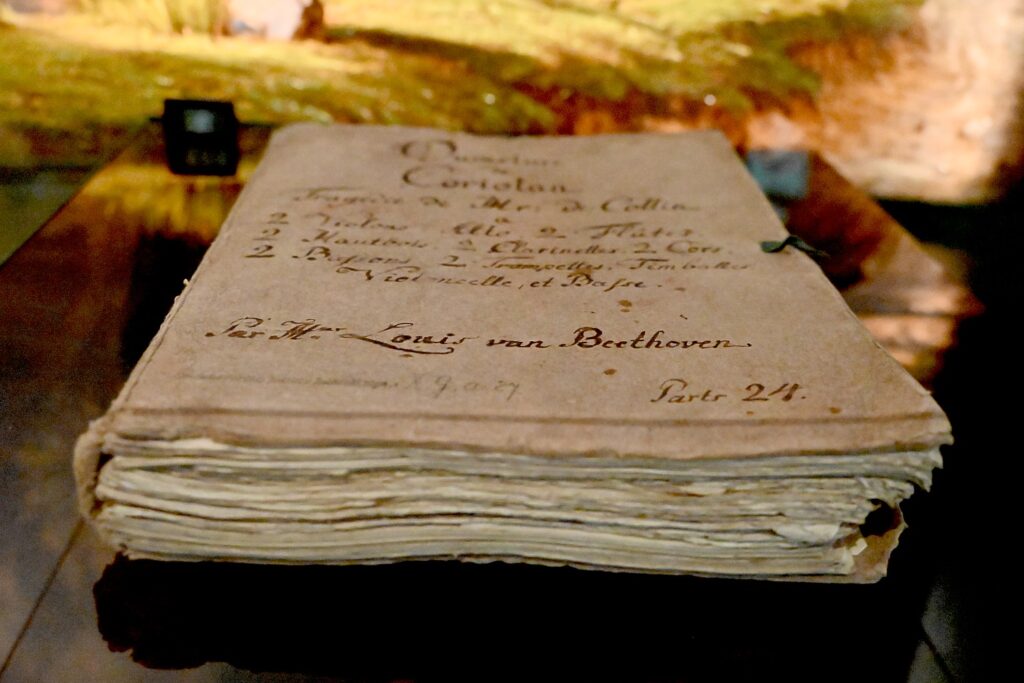
But the family’s paramount musical figure was Joseph Frantisek Maximilian (1772-1816), 7th Prince Lobkowicz, who was Beethoven’s greatest private patron. The first performances at both the family’s Vienna Palace and North Bohemian castle of Jezeri resulted in Beethoven dedicating numerous works to Lobkowicz, including his 3rd (Eroica), 5th and 6th (Pastoral) symphonies. Joseph was a founding member of the Society of the Friends of Music in Vienna, a member of the Society for the Promotion of Musical Culture in Bohemia and a director of the Court Theatre of Vienna. He was also responsible for commissioning the reconstruction of the palace’s exterior, giving it the appearance it has today. Upon his early death, in 1816, his son Ferdinand Joseph, 8th Prince Lobkowicz (1797-1868), continued Beethoven’s annuity and maintained the family orchestra, most of instruments of which survive today in the collection, along with autographed manuscripts by Gluck, Mozart and Beethoven.
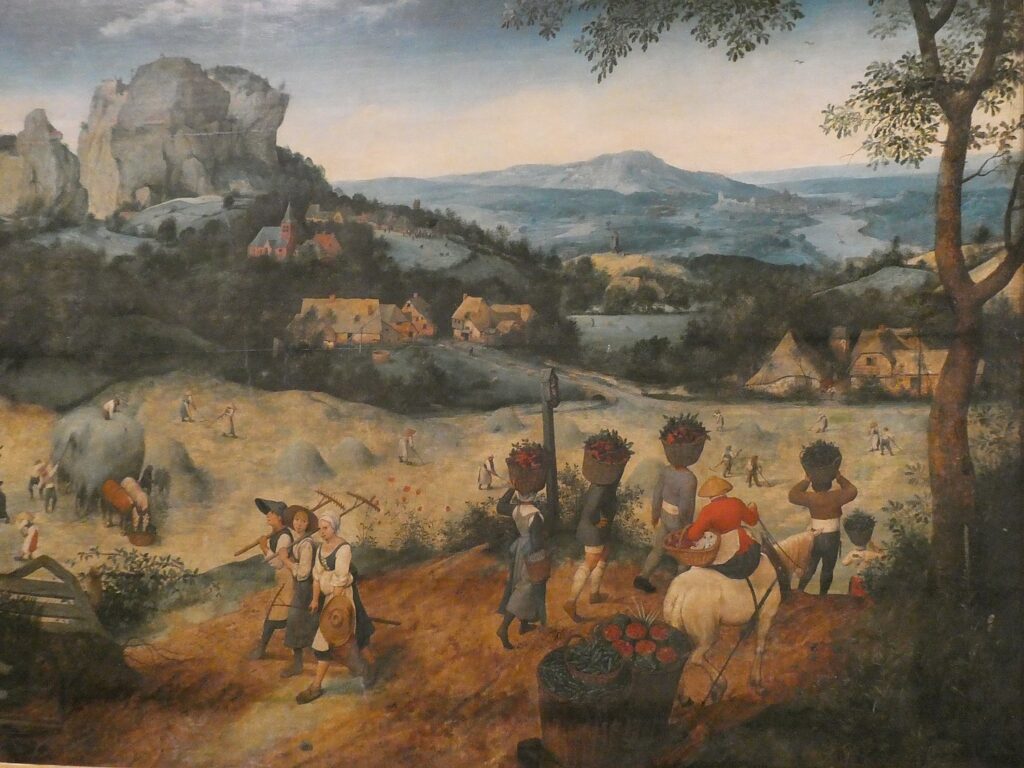
Walk on and you find yourself in an intimate gallery with Pieter Bruegel the Elder’s famous “Haymaking,” painting – one of only five known today (one in the Metropolitan Museum of Art in New York City, three in Kunsthistorisches museum in Vienna and this one), notable because it is among the first landscape paintings depicting everyday life. Just beyond, in another gallery, are two masterpieces by Canaletto: “London: The River Thames on lord Mayor’s Day, and ‘The River Thames Looking Towards Westminster from Lambeth,” “an important and comprehensive visual record of how the city looked in mid-18th century, and among the greatest of the Venetian painter’s English period works.”
Another highlight of the visit to Lobkowicz Palace is an incomparable view overlooking the city from one of the balconies.
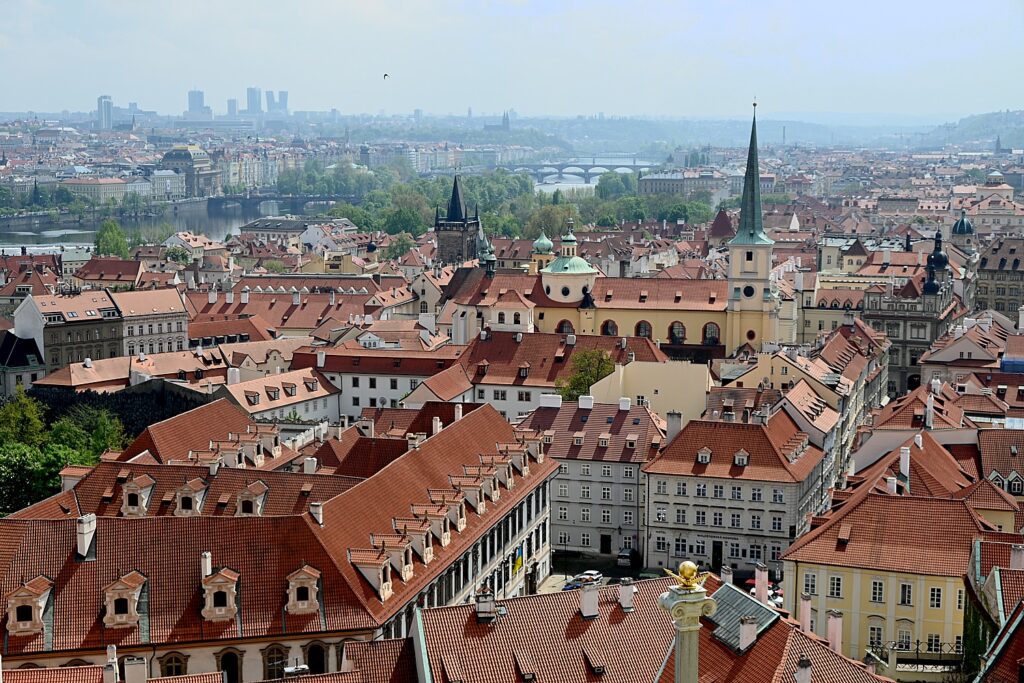
The tour continues on the first floor of this magnificent palace. In the Princess Ernestine Room you see a remarkable series of portraits painted by Princess Ernestine of Nassau-Siegen (1623-68) including her own self-portrait. Her work is notable as a 17th century woman painter, particularly because she was of noble birth. She was herself painted by Sir Anthony van Dyck in 1634, when she was 11, in one of his largest and greatest family group portraits, which possibly inspired her to paint. The portraits entered the collection through the marriage of the artist’s only daughter, Claudia Frantiska (1660-80) to the 3rd Prince Lobkowicz in 1677. (We are informed that they were cleaned and conserved through funding of Friends of Heritage Preservation.)
The Lobkowicz princes, throughout history, played important roles as high-level officials working closely with kings and emperors.
After World War I and following the end of hereditary titles in 1918, Maximilian Lobkowicz (1888–1967), son of Ferdinand Zdenko, 10th Prince Lobkowicz (1858–1938), provided crucial support to the newly formed, democratic Czechoslovakia as a lawyer and diplomat, campaigning abroad for international recognition. He demonstrated his support for the fledgling First Czechoslovak Republic by making several rooms at the Palace available to the government, headed by the new nation’s first President, Tomas G. Masaryk.
In the 1930s, Maximilian mustered diplomatic support for opposition to the German annexation of the Sudetenland, and during World War II he served as ambassador to Great Britain for the Czechoslovakian government in exile.
“Max supported the new Czechoslovakia in 1918, even though it abolished inherited titles,” William narrates about his grandfather. “He was against the Nazi regime. He had a British wife and was active in the underground.” Their property was taken by the Nazis. Most of the possessions were returned in 1945, but confiscated again in 1948 when the Communists came to power. “Max was trapped in Czechoslovakia after it was taken over by the Communists. He got a two-day pass to visit his wife. He left with nothing but his hat and coat.”
The property was returned to the family in 2002, and in 2007, they opened the palace and all its collections to the public.
The surprises of this place continue.
At the end of the visit, is a special room dedicated to the “Queens of Ukraine”: glamorous photographs of Ukrainian women who work in the Czech Republic. “They have worked hard all their lives as housekeepers in our country, sending money to their families in Ukraine as there was no work. Now their sons are at war and their daughters are running away with little children from a country that’s fighting for its freedom.”
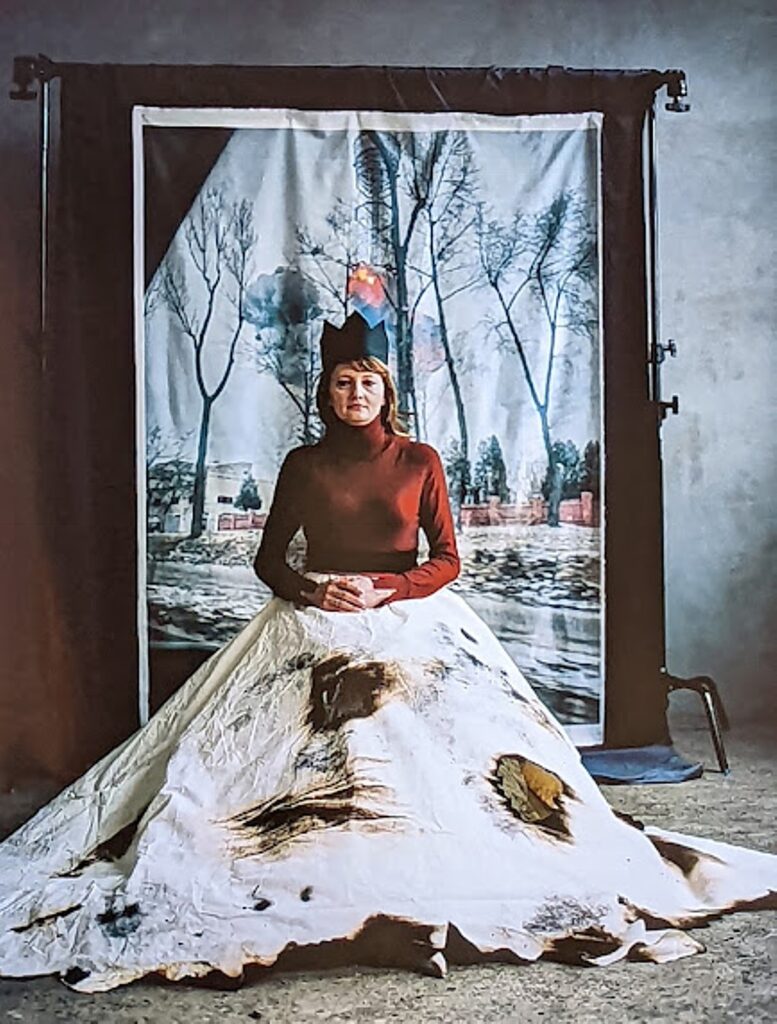
It is related to an exhibit of “Culture Under Siege” photos documenting the devastating destruction of cultural sites in Ukraine as a result of the Russian invasion. They were taken by several Ukrainian photographers in two weeks early in the invasion. Religious buildings, museums, monuments, antiquities, “the silent cultural casualties in Ukraine continue to intensify, exacerbating the country’s humanitarian suffering. These photographs remind us that culture is an essential source of identity and community. Where culture is destroyed, humanity’s past, present and future is too.”
The project was created in collaboration with Ukrainian photographers – each photo uses a backdrop taken by Ukrainian photographers in the first days of the war. “Queens of Ukraine” is aimed at highlighting Ukrainian artists and raising funds to support families suffering from war. The works were sold as NFTs (non fungible tokens), with 50 percent of the sale supporting the Queen herself and the other 50 percent supporting the Ukrainian artist, writes Bet Orten, the photographer/artist.
There are also concerts here, and I can’t imagine a more impressive venue.
(Lobkowicz Palace, [email protected], www.lobkowicz.cz).
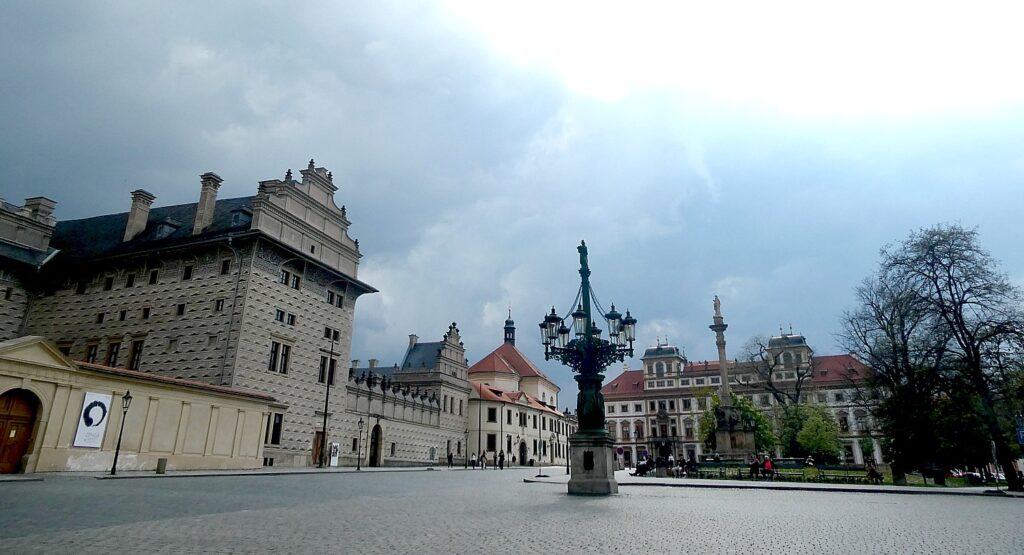
Just outside the gate to the Prague Castle, flanking the enormous square, are two palaces that are now are part of the National Gallery Prague (also included in the Prague Cool Pass):
The Schwarzenberg Palace, which it turns out was built by Johann iV Popel of Lobkowicz in 1567 and from World War II to 2002 was a Military History Museum, before being acquired by the National Gallery Prague) features Old Masters of the Renaissance (Albrecht Durer, El Greco, Lucas Cranach the Elder, Hans Holbein the Elder, Brueghel), Baroque (Peter Paul Rubens, Anthony van Dyck) and Rococco.
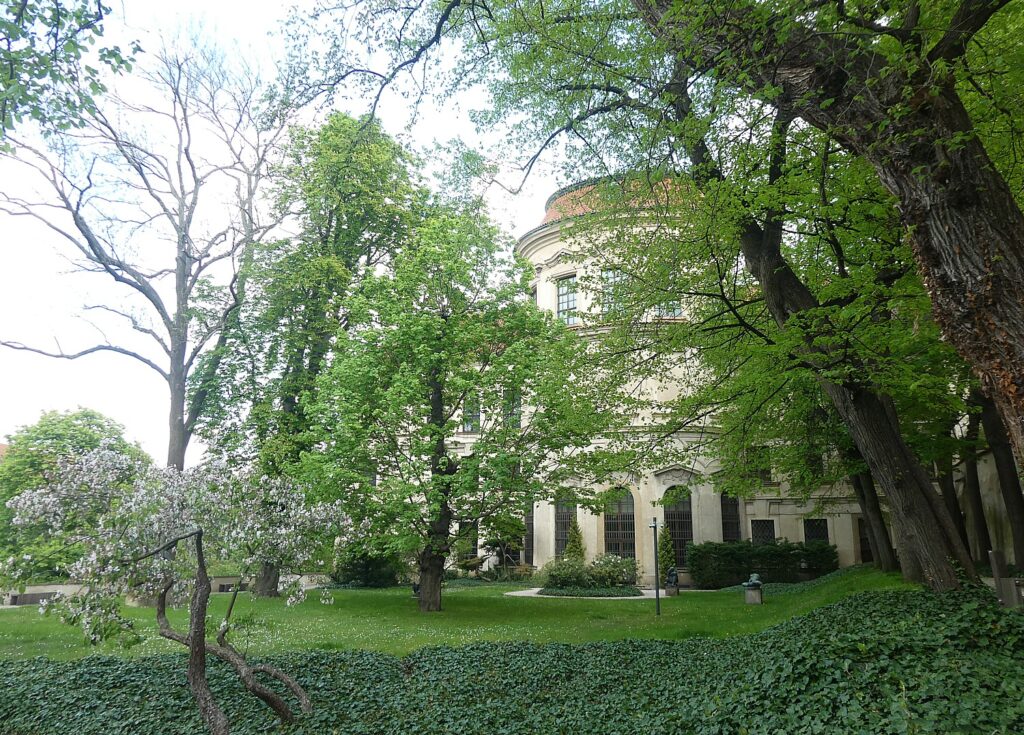
The Sternberg Palace, built by Count Vaclav Vojtech of Sternberg, features Old Masters II, continuing a long tradition as the Picture Gallery of the Society of Patriotic Friends of the Arts, the National Gallery’s predecessor. It features Archduke Franz Ferdinand’s collection of Italian paintings of the 14th and 15th centuries, the largest collection of Italian primitive school outside of Italy. My favorite section, though, is an extraordinary collection of Dutch and Flemish painting of the 15-18th centuries from Antwerp, Amsterdam, Utrecht and Layden (Brueghal, Rubens, van Dyck). There is also a delightful garden area.
More information at www.naprague.cz
Walking around Prague, I was struck by how demonstrably pro-Ukraine the Czechs are – banners unfurled at government buildings, apartment buildings – which is understandable considering the Czech people know full well what it is like to live under the Soviet yoke. I also came upon a climate protest, and after spending a lot of time in the Jewish Quarter (a square is named for the Jewish novelist Franz Kafka, in front of the Library), and even in the National Museum, I was struck by how respectful of its Jewish heritage Prague is.
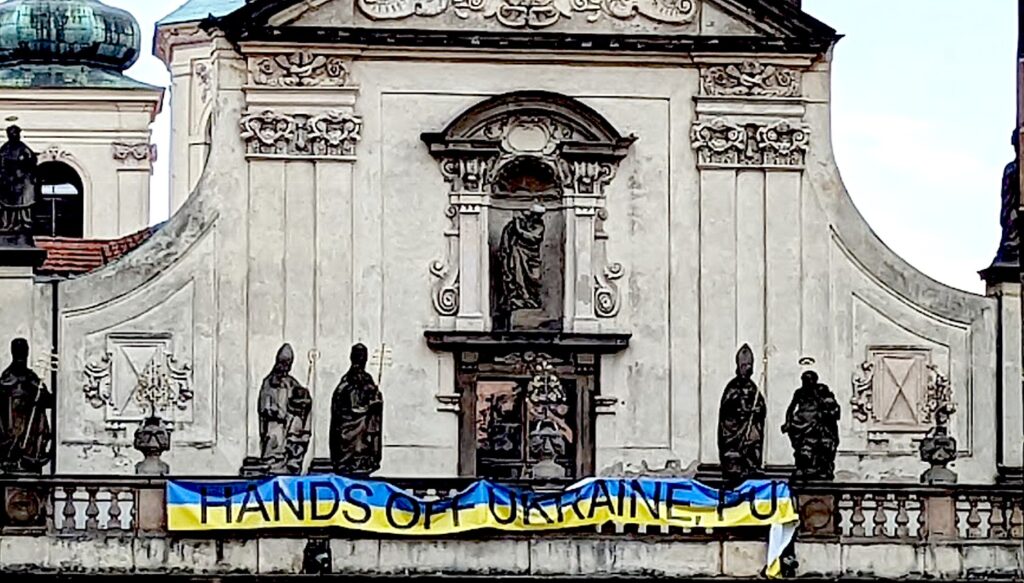
Also, how culturally liberal. Prague is a place of pleasure, of indulgence – you see it and feel it in the number of chocolate and sweet shops, cannabis shops, beer and wine, casino, Thai massage parlors,and a generally permissive attitude toward sex (you can visit the Sex Machine Museum at the archway to the Old Town Square).

And a streetscape that is out of a fairytale. Prague is a place to wander, explore, discover, get lost and be surprised and delighted.
By now, it’s time for me to return to the hotel, pick up my luggage, and make my way to Elbe Princess for my CroisiEurope river cruise. I will have one more full day here in Prague – the ship offers guided walks of the Jewish Quarter and the Prague Castle – before the ship begins its eight-day cruise to Berlin.
The Prague Cool Pass is extremely easy to purchase and use – you purchase it online, download an app, and it activates the first time you use it, and is good for the amount of time you purchase, 2 to 4 consecutive days. You just flash the QR code to the ticket counter and they issue you a ticket. (Each attraction can be visited only once. The pass provides free entry to some 70 attractions (including Prague Castle, Jewish Museum, Petrin Tower), free sightseeing bus tour, free river cruises, plus discounts on other attractions, tours in and outside Prague, concerts, entertainment, dining and other activities. The app is really helpful, giving details and visitor information about the attraction, plus maps. (See praguecoolpass.com)
__________________________
© 2022 Travel Features Syndicate, a division of Workstyles, Inc. All rights reserved. Visit goingplacesfarandnear.com, www.huffingtonpost.com/author/karen-rubin, and travelwritersmagazine.com/TravelFeaturesSyndicate/. Blogging at goingplacesnearandfar.wordpress.com and moralcompasstravel.info. Visit instagram.com/going_places_far_and_near and instagram.com/bigbackpacktraveler/ Send comments or questions to [email protected]. Tweet @TravelFeatures. ‘Like’ us at facebook.com/NewsPhotoFeatures
